Shortages Of Laboratory Kits Suspend Medical Tests In Iran

According to local reports, severe shortages of laboratory kits in Iran have led to the suspension of over 50 types of medical tests in the country.

According to local reports, severe shortages of laboratory kits in Iran have led to the suspension of over 50 types of medical tests in the country.
Etemad newspaper on Friday reported that several medical diagnosis and genetic laboratories in Tehran and Esfahan have deactivated hormonal, infectious, and genetic tests in their registration systems because the required kits for performing these tests are unavailable.
The procurement of kits in Iran has been challenging in recent years, but this year the difficulty has reached a point where even buying them from the black market is not a possibility, the report says.
Over 80% of laboratory items in Iran are dependent on imports, and the equipment that is produced domestically requires its raw material to be imported as well.
The allocated foreign currency for importing laboratory equipment has experienced a sharp decrease to half of its previous amount in the past three years, according to the Etemad report.
Imports and the foreign currency market are controlled by the Iranian regime, meaning the funds that were meant for the purchase of medical tests have been spent elsewhere.
This is not the first time that medical products and equipment have become unavailable in Iran. Two years ago, there was a critical shortage of serums, and the Iranian Pharmacists Association stated that cost-cutting measures by the authorities was the leading cause of the shortages.
"We are facing both a shortage of kits and a significant increase in the prices of kits and other consumables, up to four or five times higher,” said Mohsen Manshadi, owner of the Manshadi Medical Diagnosis Laboratory in Tehran.
"Many times, my laboratory colleagues have had to repeat a test using multiple kits to arrive at the correct result or use cheaper kits,” Manshadi added.
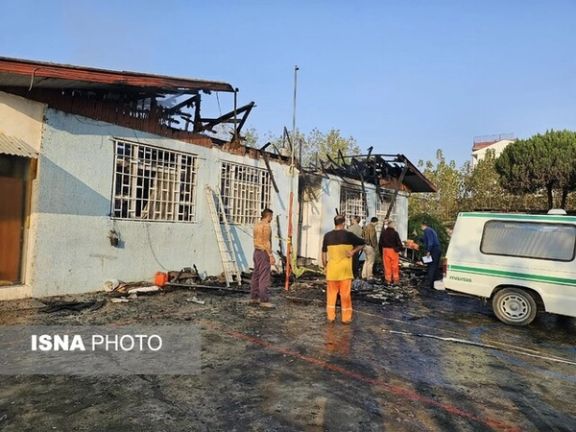
Following a fire in a drug rehabilitation camp in Gilan province in northern Iran, 32 people have been killed and 16 people have been injured, local media reported on Friday.
Preliminary investigations indicate that a heater in the opium rehab camp in Langarud in the Caspian Sea province of Gilan was the cause of the fire that spread to the rest of the area, Reuters reported.
The fire was called in to the fire department before 6 am on Friday but the exact cause is yet to be determined.
The Chief Prosecutor of Gilan announced that the camp managers and officials responsible are under investigation, referring to the transfer of the bodies of the deceased to the forensic laboratories.
The Mizan News Agency, affiliated with the judiciary, also stated that the maximum capacity of the facility is 40 people according to statistics. However, it is unclear how many people were actually living in this camp at the time of the fire.
Images of the fire reported by ISNA showed it lighting up the sky and sending huge clouds of smoke into the air around the camp.
Other pictures showed emergency staff, firefighters and ambulances gathered outside the heavily damage site after the fire was stopped. The images show that the roof of the facility has been destroyed and the windows have been broken.
In recent years, there have been numerous fires with casualties in Iran which experts say are the result of bad management by authorities and lack of funding for up-to-date infrastructure.
In January 2017, Plasco shopping center in Tehran caught fire, killing at least 22 people including 16 firefighters. The incident was a major tragedy and it highlighted major flaws in Iran’s safety standards and firefighting capabilities.
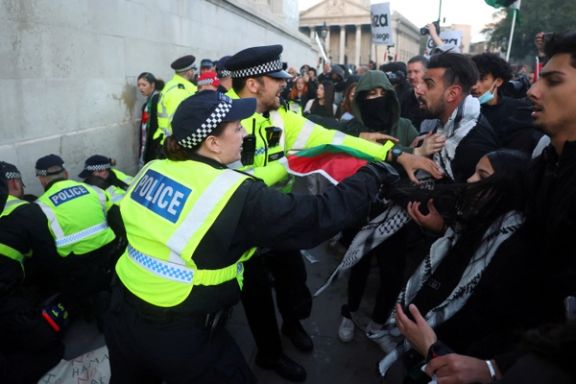
An investigation in The Times of London has revealed more than six UK-based groups with ties to the Iranian regime and active in pro-Hamas rallies.
It comes amid rising fears that the Iranian regime’s influence on UK soil is deepening, as seen in the weekly pro-Palestine / pro-Hamas protests which have been shown to be fuelled by Tehran-linked groups.
In the latest report from The Times, it claims “Whitehall briefings, informed by intelligence, suggest that Tehran has links to a core group of institutions to assert soft power, drive influence and sow tension”.
It went on to add that a “wider network comprising mosques, charities and other third sector organisations are also thought to have regime links”.
The latest revelations come amid the war between Israel and Iran-backed Hamas, which last weekend saw over 100,000 protesters on the streets of London backing Gaza.
Anti-regime activist Vahid Beheshti, was attacked at the protest, in a suspected act by IRGC agents. He was also assaulted on October 14 by activists carrying images of Khamenei and assassinated Quds Force commander, Qassem Soleimani. One man was arrested and charged for possessing a knife in public after allegedly threatening to behead him.
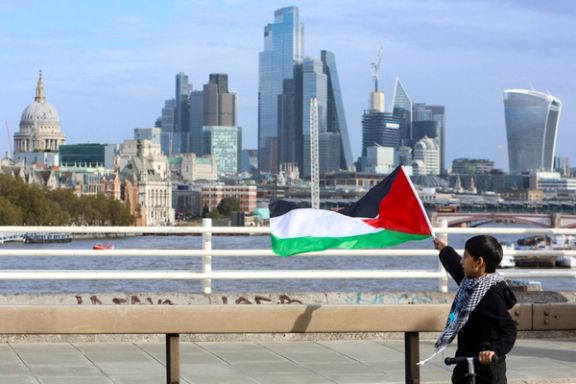
One of the organizations, The Times claims, with direct links is the Islamic Centre of England [ICE] which is at the center of an inquiry by the Charity Commission. Another is the Islamic Human Rights Commission, an advocacy group with links to Iran’s supreme council.
Leaflets at last week’s protests contained typically incendiary regime rhetoric about Israel, calling it the “usurper Zionist regime” and as a cancer that would be eradicated. Protesters were even seen holding photos of Supreme Leader, Al Khamenei who recently hailed its proxy for the atrocities on October 7 when it invaded Israel, killing 1,400 mostly civilians and taking a further 240 hostage in Gaza.
As if it were the streets of Tehran, placards could be seen with the words “the Zionist regime is dying” and others even held flags of Iran and its proxy, the Al-Hashd Al-Sha'bi militia force.
Just last month UK security chiefs continued to voice concerns about the threat posed by Iran on UK soil. Earlier this year, it was revealed that multiple attacks by the IRGC have been thwarted, including on Iran International offices which were temporarily forced to relocate to Washington.
As regime fervour continued to simmer, The Union of Islamic Student Associations in Europe, which has active branches in Britain and several other European countries, shared a clip of Khamenei’s speech spliced with footage of London protests on Telegram on Wednesday, The Times revealed.
Only in August, the group, which is said to have direct backing from Khamenei, hosted several senior IRGC figures in online talks viewed by British students, who were encouraged to fight in an “apocalyptic war” against Iran’s enemies and Jews.
This week, Khamenei gave a speech mocking the allegations that the regime had its hand in mass protests across Europe, in a speech Wednesday laughing at the idea of the public claiming “the London Basiji must be behind this, or the Paris Basiji must have done this”. Instead, he insinuated it was simply the weight of anti-Israel fever sweeping the streets of Europe.
Behesthti said the actions of recent weeks show ever more the need for the UK and others to proscribe fully Iran’s IRGC as the regime’s threats to the West become ever more feverish. His speech addressed all Muslims around the world that it is not only the "Zionist regime of Israel" that is standing against Islam, but also Britain, France and the United States.
“Khamenei is openly giving an order of Jihad to all Muslims, in order to go after the "enemies of Islam", namely Great Britain, France and the United States, according to the Supreme Leader of the Islamic Republic.
“Yet, given this, our government in the UK is still reluctant to proscribe the Islamic Revolutionary Guard Corps. This is a necessary step in order to send a strong message that the UK does not tolerate terrorism and continued threats against our national security.”
The US proscribed the IRGC in 2019 under then-President Donald Trump and while many other nations have designated members, with the sensitivity of Iran’s nuclear program, it has become a global bone of contention for countries such as the UK and Canada as to whether or not to designate the group as a whole.
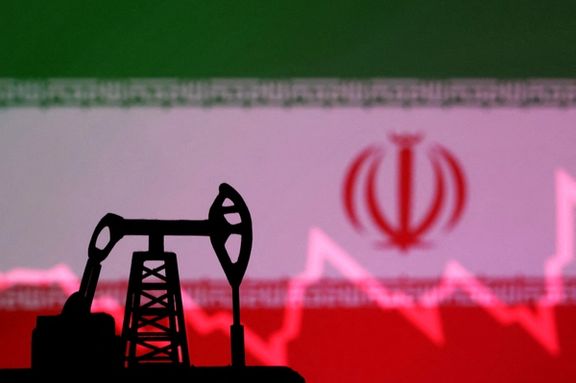
Iran’s oil minister Javad Owji claimed on Wednesday that the country is producing 3.4 million barrels per day (mb/d) of crude oil, about 1.2 mb/d more than in mid-2021.
In recent months, Owji has consistently reported oil production growth figures that contradict estimates from international entities.
Both OPEC and the International Energy Agency, put the country’s crude oil production at 3.1 mb/d in September, when Owji had claimed 3.3 mb/d output level for that month.
A possible reason for Owji’s exaggerated claims is repeated promises by President Ebrahim Raisi’s administration to boost the energy industry, while e its overall economic performance has remained dismal. Annual inflation hovers around 50 percent, while the government is in a race to print more money. The national currency, rial, is near its historic lows at 520,000 per US dollar.
Iran used to produce about 3.8 mb/d of crude oil as well as 650,000 b/d of gas condensate (ultralight oil) before the US imposed sanctions in 2018, when it withdrew from the Obama-era JCPOA nuclear accord and opted to put ‘maximum pressure’ on Tehran.
From the higher pre-sanction volumes, roughly 2.5 mb/d was exported and about 1.95 mb/d was consumed domestically. Currently its domestic consumption stands at 2.2 mb/d due to operational of new phases of Persian Gulf Star refinery, which refines gas condensate.
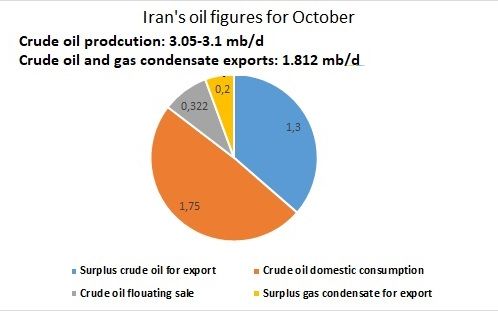
How much oil Iran produces?
According to Kpler trade intelligence firm’s tanker tracking data, Iran’s crude oil and gas condensate exports reached 1.812 mb/d together in October, the highest since 2019 and about 370,000 b/d more than in September 2023. However, a part of this growth is due to selling its floating oil storage, not production growth.
Iran’s crude oil floating storage has declined 10 million barrels during October, or 322,000 b/d. Iran exported 1.5 mb/d of its surplus oil production as well as 322,000 b/d of flouting stockpile.
Iran had about 60 million barrels of unsold floating crude oil, stored on tankers as well 50 million barrels of gas condensate in mid-2022, but they had declined to 26 million barrels and 1 million barrels respectively as of late October 2023.
According to Oil Ministry’s official data, obtained by Iran International, the country’s 10 refineries currently consume about 1.75 mb/d of crude oil and 450,000 barrels of gas condensate (2.2 mb/d together).
As the country produces 650,000 barrels of gas condensate daily; It has 200,000 b/d of surplus to export.
If Owji’s claims are true and Iran is producing 3.4 mb/d of crude oil, then it should export its surplus 1.65 mb/d of crude oil as well as 0.2 mb/d of gas condensate.
However, as it was mentioned above, the country exported 1.812 mb/d of oil in October, including about 322,000 barrels of floating crude oil sale.
Therefore, Iran had only 1.5 mb/d of surplus crude oil and gas condensate for export in October.
It means crude oil production was about 3.1 mb/d, in line with OPEC and IEA’s estimates, not 3.4 mb/d, claimed by Owji.
Iran has still 26 million barrels of floating crude oil storage to be sold, according to Kpler.
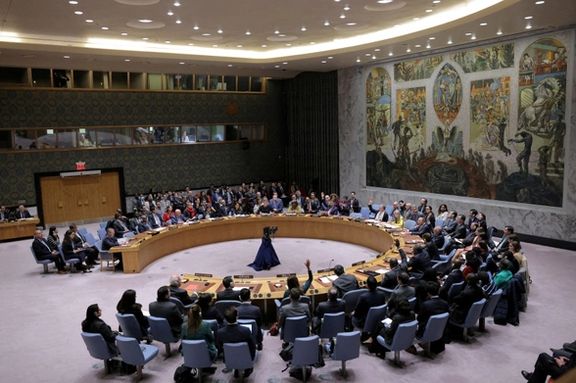
The United States has announced that it will not participate in the Social Forum of the UN Human Rights Council as Iran is scheduled to chair the meeting.
“We categorically refuse to sit, converse, or engage in any discussion on human rights chaired by Iran,” read a statement by Michèle Taylor, US permanent representative to the Human Rights Council, at the start of the Social Forum in Geneva.
She rejected as “absurd” and “unacceptable” the Iranian regime’s chairing of the Social Forum as the country itself is implicated in “persistent and flagrant human rights abuses,” including the murder of over 500 civilians during the last year's Women, Life, Freedom protests.
Referring to Armita Geravand and Mahsa Amini, the Iranian women who lost their lives after being assaulted by the regime’s morality police, Taylor stipulated that “state-sponsored violence” is “a daily reality for the Iranian people, especially for women and girls,” amidst the regime's tightening of oppressive hijab laws.
“It is an affront to the collective conscience of the global community that Iran’s officials occupy any leadership role within the corridors of the UN, especially on matters related to human rights,” she added.
Taylor also questioned the very existence of the Social Forum, saying that Washington was against its creation in 2015 for its “limited utility” and “additional costs.”
On October 31, Narges Mohammadi, the imprisoned Iranian Nobel peace laureate, dismissed Tehran’s leadership in the Social Forum as “perplexing and disheartening” in a letter to UN Secretary-General Antonio Guterres.
She urged the UN to remove Tehran from the position, saying the Islamic Republic is “a gender apartheid regime” and “a suppressor of civil society.”
In May 2023, UN Watch, an independent human rights organization, also submitted a resolution to the UN to overturn Iran's appointment as the chair of the Social Forum.

The father of one of the Iranian protesters killed during the November 2019 demonstrations has been sentenced to an extra six months in prison on the charge of "insulting the leader."
The verdict was issued against Manouchehr Bakhtiari by the Qazvin Revolutionary Court, according to the US-based Human Rights Activists News Agency (HRANA), who is already serving a three years and six month sentence in Qazvin Central Prison.
His wife, Sara Abbasi, informed HRANA about his deteriorating physical condition, stating that over a year and a half ago, forensic medicine confirmed the urgent need for hernia and prostate surgery.
He has also been suffering from a toothache for over three months and has been denied specialized medical treatment and a medical furlough, despite the family's appeals to relevant authorities.
Bakhtiari was detained in his home in Tehran in 2021 by security forces, accompanied by beatings and insults. Subsequently, he was sentenced by the Revolutionary Court to two years and six months of internal exile and a two-year travel ban in addition to his three years and six months prison sentence.
Bakhtiari's son, 27-year-old Pouya, was shot in the head in Karaj during the November 2019 protests. The family has accused security forces of his death. His father has been an outspoken advocate for holding the authorities accountable for the death of his son and hundreds of others allegedly killed by security forces.